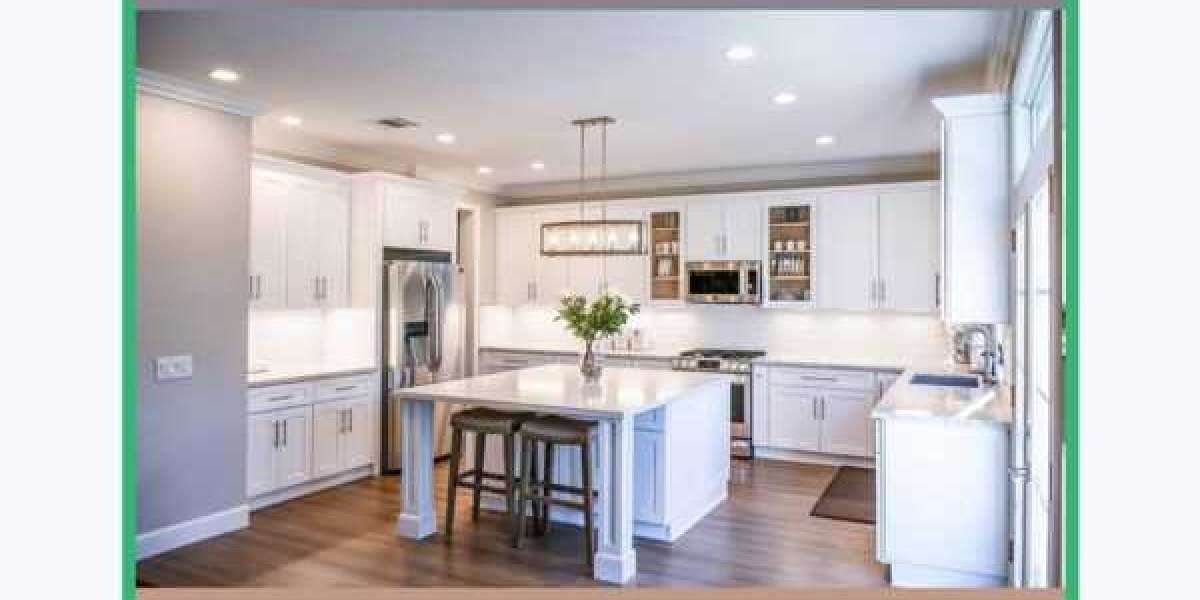Designing a kitchen goes beyond choosing tiles, paints, or appliances—it is about creating a functional and welcoming heart of the home. The right kitchen furniture ties everything together, adding both style and practicality. Whether you are renovating an existing space or designing from scratch, your furniture choices will determine how efficiently you can cook, how comfortably your family can gather, and how beautifully the space blends with the rest of your home. Selecting kitchen furniture requires careful thought, and it is essential to strike a balance between aesthetic appeal and everyday convenience.
Understanding the Role of Kitchen Furniture
Kitchen furniture does more than provide storage and seating—it shapes the workflow and atmosphere of your entire cooking area. Cabinets, tables, chairs, and countertops need to serve practical purposes while complementing the theme of the house. A cluttered or mismatched setup can make the kitchen feel cramped, whereas well-chosen furniture creates harmony and maximizes space. It is important to think about who uses the kitchen, how often, and what activities take place there. A kitchen used primarily for entertaining will need different furniture from one designed for quick, everyday meals.
Assessing Your Kitchen Space
The first step in selecting furniture is to analyze your available space. Large kitchens can accommodate expansive tables, islands, and even a cozy breakfast nook. Smaller kitchens, however, demand a minimalist approach with multi-functional pieces that do not overwhelm the area. Measuring the space carefully before purchasing is critical. You must consider walking areas, door openings, and appliance placement to ensure the furniture does not interfere with movement. By working with the exact dimensions of your kitchen, you can avoid mistakes that make the room feel cluttered or unusable.
Choosing a Design Style That Reflects Your Home
Your kitchen furniture should not feel disconnected from the rest of your home. If your interiors lean towards modern minimalism, sleek cabinetry and streamlined chairs will enhance that style. A rustic home, on the other hand, benefits from wooden finishes and vintage-inspired pieces. Consistency is vital for creating a sense of flow. Think about the materials, finishes, and colors that dominate your living and dining areas, then bring similar elements into the kitchen. This approach makes the transition between rooms seamless and creates a unified atmosphere throughout your house.
Prioritizing Functionality Alongside Beauty
While style matters, functionality must always come first in kitchen design. A beautiful chair that is uncomfortable to sit on or a table that scratches easily will quickly become frustrating. The perfect furniture is durable, easy to clean, and capable of withstanding everyday use. For example, cabinets should be spacious enough to hold utensils, cookware, and groceries without looking overloaded. Tables and counters should have surfaces that resist stains and heat. Chairs and stools should be ergonomically designed so family members and guests can linger comfortably.
Considering Material and Durability
Furniture materials play a decisive role in longevity and overall appeal. Wood remains a timeless favorite, offering warmth and character. Solid hardwood, while more expensive, stands the test of time and adds a premium feel. Metal furniture gives a sleek, industrial edge and is often more resistant to wear. Glass tables and countertops add elegance but require regular maintenance to keep them spotless. In many households, a blend of materials provides the best balance—wood for cabinets, metal for stools, and stone for countertops, for instance. Selecting the right materials ensures that your kitchen remains stylish and functional for years.
Comfort and Practical Seating Options
Seating is one of the most essential elements of kitchen furniture. Whether it is a bar stool at an island, a cushioned chair at a dining table, or a bench for a breakfast nook, comfort is non-negotiable. The seating must align with the height of tables and counters to ensure ease of use. In family kitchens, benches or expandable tables with multiple chairs work well for gatherings. For smaller spaces, foldable or stackable seating can be a smart option. Good seating encourages interaction, making the kitchen not only a place for meals but also a hub of family connection.
Storage Solutions That Work for You
Clutter-free kitchens are easier to maintain and more enjoyable to use. Furniture with built-in storage can transform the way you manage your space. Cabinets should be designed to hold essentials in an organized manner, while island counters with shelves or drawers add additional storage. If your kitchen is compact, consider tall cabinets that take advantage of vertical space. A thoughtfully designed storage plan eliminates the need for overcrowding surfaces and keeps your kitchen looking neat. This balance between beauty and functionality is the hallmark of good furniture selection.
Exploring Trends and Local Inspiration
Modern kitchens blend global design influences with local sensibilities. In many regions, cultural preferences shape furniture styles and layouts. For example, often reflects a combination of traditional craftsmanship and contemporary finishes. This mix results in warm, inviting furniture pieces that serve both aesthetic and practical needs. Exploring local markets and consulting regional experts can provide unique furniture options that combine affordability with cultural relevance, allowing you to create a kitchen that feels personal and distinctive.
Budgeting Wisely Without Sacrificing Quality
Budget plays a significant role in furniture selection. It is tempting to go for cheaper alternatives, but poor-quality pieces often wear out quickly, leading to higher long-term costs. Instead, aim to balance affordability with durability. Decide which items are worth investing in—such as cabinets and countertops—and which can be chosen at a lower price point, such as chairs or decorative pieces. Creating a realistic budget prevents overspending while ensuring that the essentials of your kitchen remain strong and reliable.
Lighting and Furniture Integration
Lighting is often overlooked, yet it enhances the impact of your furniture choices. A well-lit dining table looks more inviting, while under-cabinet lighting highlights the sleekness of your cabinetry. The placement of furniture should work in harmony with your lighting design to create ambiance and functionality. For instance, during lights over an island make seating areas more defined and practical. Integrating lighting into your furniture layout ensures that the beauty of your choices does not go unnoticed.
Personal Touches That Make the Kitchen Yours
Finally, selecting furniture is not just about practicality—it is also about personality. Adding unique touches through customized chairs, hand-painted cabinets, or distinctive dining tables makes your kitchen truly one of a kind. These elements give the space character and reflect your taste. Personal touches also make the kitchen more welcoming for family and guests, reinforcing its role as the heart of the home. Whether through color accents, artistic details, or heirloom pieces, your furniture should tell your story.
Conclusion
Choosing the perfect kitchen furniture is a thoughtful process that requires balancing beauty, comfort, and functionality. From assessing your available space to selecting durable materials and ensuring proper storage, every decision contributes to the overall experience of your kitchen. By keeping design consistency, local influences, and budget in mind, you can create a space that not only meets your daily needs but also enhances the aesthetic appeal of your home. A well-furnished kitchen becomes more than just a place to cook—it becomes a gathering space, a reflection of personal style, and the true heart of family life.














